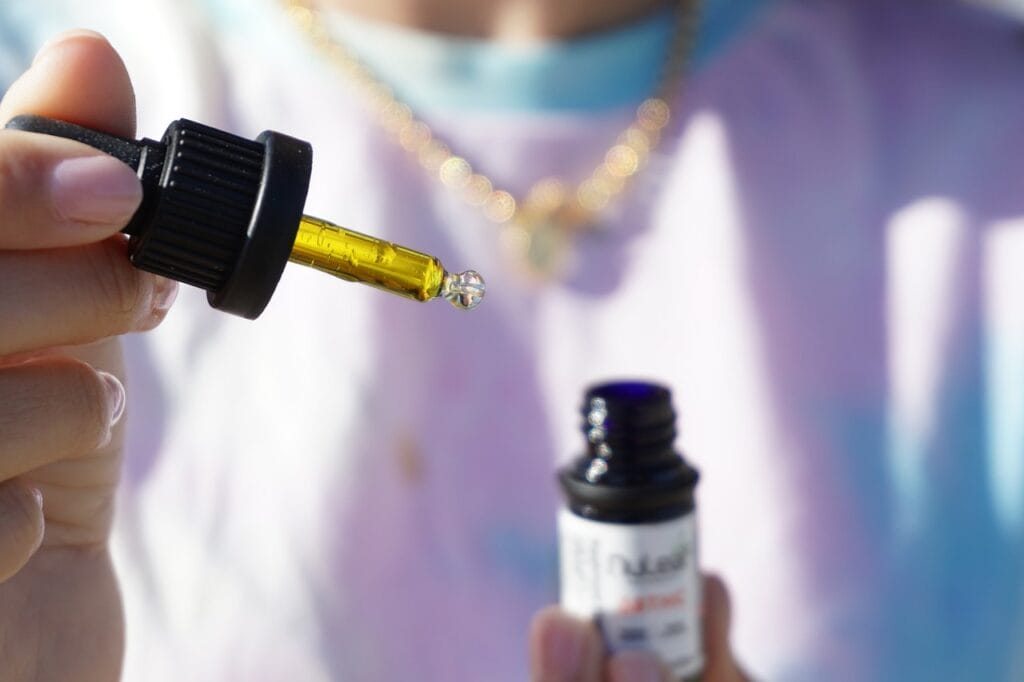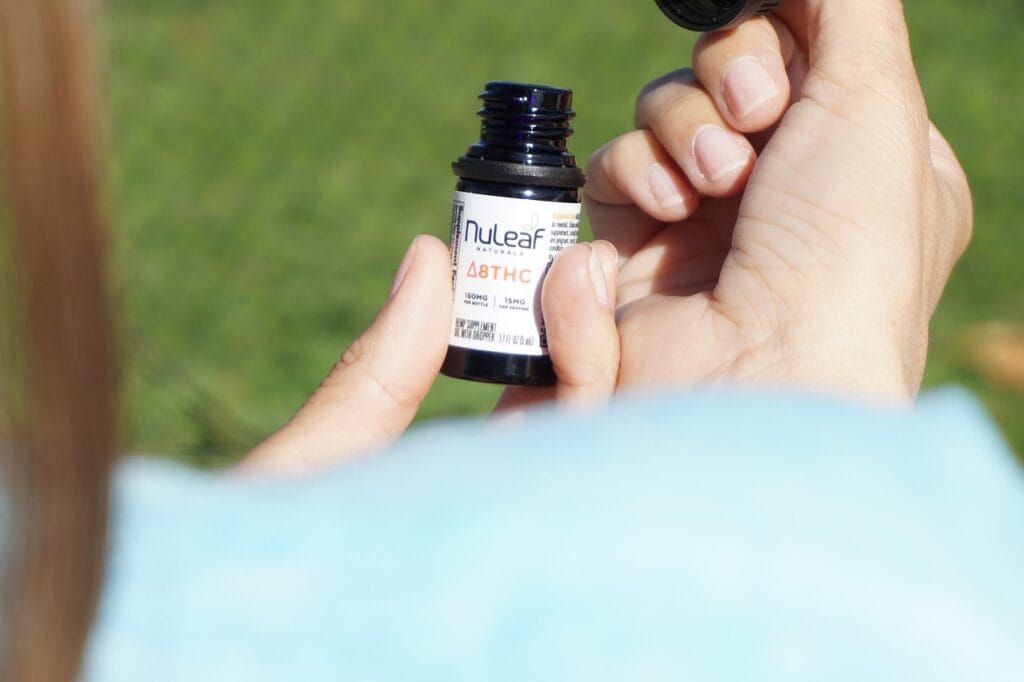The process of creating THC distillate for maximum potency is highly relevant for consumers seeking potent and concentrated cannabis products, especially for weed vape enthusiasts. THC distillate has high levels of THC and can have intense effects when you smoke and inhale. Further, it offers a powerful experience when used in weed vape devices.
Understand the process behind creating THC distillate to make informed decisions about the weed vape products you choose to consume.
Table of Contents

THC Distillate
THC distillate is a highly concentrated, purified form of delta-9 THC, the primary psychoactive compound in cannabis. It is a translucent, golden-hued liquid with 90-99% purity. THC distillate is versatile, helpful in edibles, topicals, beverages, and weed vape portable vaporizers, and offers consistent and predictable dosing.
Effects
The distillation process isolates and concentrates the THC, removing impurities and plant material. This results in a potent, refined product lighter in colour with a cleaner, more powerful vaping experience involving weed vaporizers than typical cannabis.
Usage Methods
There are several ways to enjoy distillates:
- Vaping or dabbing the concentrate
- Infusing into topicals like balms and lotions
- Smoking cannabis flower
- Taking sublingually for faster absorption
The versatility and potency of THC distillate make it a popular choice for both recreational and medicinal cannabis consumers, even for those who use conduction vaporizers.
Overview of Extraction Methods
Cannabis extraction involves the separation of valuable compounds, including cannabinoids and terpenes, from the weed plant material. These cannabis extracts possess therapeutic and recreational properties and are present in a range of cannabis products like conduction vape, pen roam, or dry herb vape.
These compounds can be concentrated and purified through extraction, maximizing their potency and efficacy.
Popular Extraction Techniques
| Type | Method | Description |
| Solvent-Based Extraction Methods | Hydrocarbon Extraction | Hydrocarbon extraction uses butane, propane, or a mixture of both to dissolve cannabinoids and terpenes from the plant material. |
| Ethanol Extraction | Ethanol extraction involves submerging the plant material in ethanol to dissolve desired compounds. | |
| CO2 Extraction | CO2 extraction utilizes supercritical carbon dioxide to extract cannabinoids and other desired compounds. | |
| Solventless Extraction Methods | Rosin Press | The rosin press method utilizes a heating type and pressure to extract CBDs and terpenes from cannabis. |
| Ice Water Hash | Ice or bubble hash uses ice-cold water and agitation to detach trichomes from the plant material. | |
| Other Extraction Methods | Steam Distillation: | This gentle extraction method uses steam to separate volatile compounds from the plant material. |
| Supercritical Fluid Extraction | This method involves utilizing CO2 or other supercritical fluids as solvents to extract desired compounds. | |
| Microwave-Assisted Extraction | Microwave-assisted extraction uses microwave energy to enhance the extraction process. |
Review: Processing and extraction methods of medicinal cannabis: a narrative review
This review, published in the Journal of Cannabis Research, examines the drying and extraction methods of the Cannabis sativa L. plant for medicinal cannabis production. Researchers found solvent extraction to be the most common method, but solventless and hydrodynamic extraction require further investigation.
Hang drying is currently the preferred drying method, but freeze drying may become more prevalent. The review discusses traditional and modern drying techniques, the importance of solvents in extraction, solventless extraction procedures, and alternative extraction methods.
Winterization and Filtration
After the initial extraction, the crude oil undergoes winterization to remove unwanted compounds. Winterization involves adding ethanol to the crude oil and storing it at sub-zero temperature settings for 24 to 48 hours.
This extended period allows impurities like waxes and fats to separate and rise to the top of the mixture. Extraction technicians then use a filter press to remove these fats from the cannabis extract.
Distillation Process
- Cannabis distillate production involves vaporizing a specific compound and ensuring temperature control before being subjected to conduction heat.
- The smooth vapour is condensed into a liquid, separating it from other compounds.
- Short-path distillation units consist of a boiling flask, condensing head, and collection flask.
- Cannabis crude oil is heated in the conduction heating chamber like a boiling flask and condensed in the condensing head, collecting the THC and CBD components.
- Wiped film distillation is suitable for larger-scale processing. It uses continuous operation and rolling wipers to create a thin film.
- The choice between short-path and wiped film distillation depends on the product and processing volume.
Decarboxylation
- After winterization, decarboxylation is necessary to activate the acidic cannabinoids in the mixture for desired therapeutic and psychoactive effects.
- Decarboxylation converts THCA and CBDA into their active forms, THC and CBD.
- Decarboxylation is preferably carried out under a vacuum to preserve desired compounds.
- THCA decarboxylates slowly, even at room temperature, but usually around 220º F for processing purposes.
- Facilitating the decarboxylation process involves heating elements under vacuum to the extracted oil, residual solvent, and terpenes.
- During decarboxylation, THCA/CBDA conversion to THC/CBD produces CO2. Proper decarboxylation ensures the removal of residual CO2 from the oil, as its presence can affect the vacuum depths during the distillation process.
Testing and Quality Control
Methods for quantification of cannabinoids: a narrative review
This narrative review, published in the Journal of Cannabis Research, focuses on methods for quantifying cannabinoids. With over 144 cannabinoids identified in the cannabis plant, tetrahydrocannabinol and cannabidiol are the most prominent ones.
The findings show that the most common quantification techniques are gas chromatography (GC) and high-performance liquid chromatography (HPLC), often accompanied by mass spectrometry (MS) or other detectors.
- GC is advantageous for terpene quantification but requires derivatization to evaluate acidic cannabinoids.
- HPLC, conversely, can quantify both acidic and neutral cannabinoids without derivatization, typically using MS or ultraviolet (UV) detectors.
Considering the information presented, the review suggests that HPLC-MS/MS is the ideal method for cannabinoid quantification.

Explore Disposable Best Vape Options
From high-quality concentrates to flavourful oils, understanding the range of extraction options can help you make informed choices regarding disposable weed vape products. Check out the best vaporizers below:
| Product | OneStop – THC Distillate Disposable Vape – Hybrid – 3ml | OneStop – THC Distillate Disposable Vape – Indica – 3ml |
| THC Content | 93% -95% | 93% -95% |
| Features | Infused with all-natural terpenes. No additives or vitamin E acetate added.Good battery life | Infused with all-natural terpenes. No additives or vitamin E acetate added.Rechargeable with micro USB |
Discover the Ultimate Weed Vape Experience with GrassLife
GrassLife offers a selection of the best weed vape products that deliver an unparalleled vaping experience. From THC distillates made from quality materials to flavourful hybrid weed vape cartridges to dry herb vaporizers, our dispensary provides options to suit every preference, desired vapour quality, and potency level.
GrassLife ensures that each convection weed vape meets the highest standards of excellence.
Frequently Asked Questions
What is a Weed Vape Device?
A weed vape device, also known as a portable vaporizer, is a device specifically designed to vaporize cannabis products for inhalation. A budget weed vape usually comes in cool portable models such as desktop vaporizers and is commonly used with cannabis oil, which is a concentrated form of cannabis extracted and refined to contain high levels of cannabinoids and terpenes.
These weed vapes come in various forms, including g pen varieties, shop vaporizers, bongs, dry herb vaporizers, weed pens, wax vaporizers, e juice, and vape pen cartridges. Some weed vape pens or conduction vapes are compatible with dry herbs and different vaporizers.
What is a Weed Vape Cartridge?
A weed vape cartridge, often referred to as a “cart,” is a pre-filled glass cartridge that contains cannabis-infused oil or other cannabis concentrate. These weed vapes are sold in half-gram or gram increments and come in various well-known strains. Loved for their potency and flavourful vapor, vape cartridges make weed vaping discreet and enjoyable.
What’s the Difference Between a Vape and a Weed Pen?
Vape pens, such as a pen dash, are versatile devices suitable for both cannabis flower and oil. They can vaporize various forms of cannabis, with the use of a dry herb vaporizer. On the other hand, weed vape dab pens are ideal for cannabis concentrates like wax, shatter, budder, and rosin.
Dab pens are generally more significant than weed vape pens and require higher temperatures for vaporizing concentrates. Both weed vape pens and dab pens cater to different preferences and allow users to enjoy the benefits of cannabis weed vape in their preerred form.
Related Articles:



